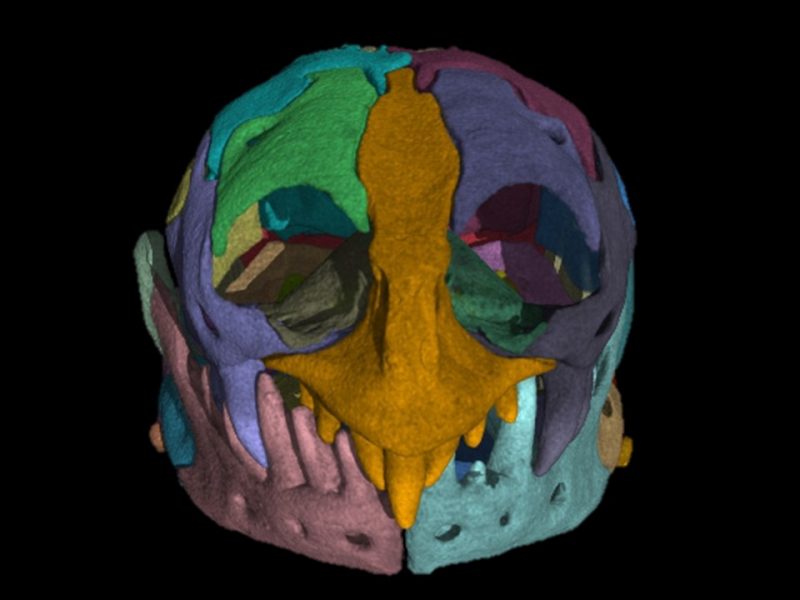Skull of Bizarre Worm- Lizard is Analyzed for First Time
April 3, 2024

Amphisbaenians are the strangest creatures you’ve never heard of. Like worms with vertebrae, scales, a large central tooth and sometimes small forearms, these reptiles live their entire lives underground, burrowing their own tunnels and preying on just about anything they encounter.
Little is known about how amphisbaenians behave in the wild. But thanks to two papers published in the March 2024 issue of The Anatomical Record, new light is being shed on these animals and their specialized anatomy.
Using a micro-CT scanner at The University of Texas at Austin’s Jackson School of Geosciences, researchers completed a detailed comparative analysis of 15 amphisbaenians from southern Africa and a bone-by-bone description of every cranial anatomical feature of the species Zygaspis quadrifrons. These are the most detailed studies of southern African amphisbaenians to date, according to the researchers.
“You could fit three skulls of the Zygaspis quadrifrons on the nail of my pinky. We can now look at these really small vertebrate organisms in a measure of detail that we never had before,” said Christopher Bell, the lead author on the paper that delved into the skull anatomy of Zygaspis and a professor in the Department of Earth and Planetary Sciences.
Back to the Geoscientist